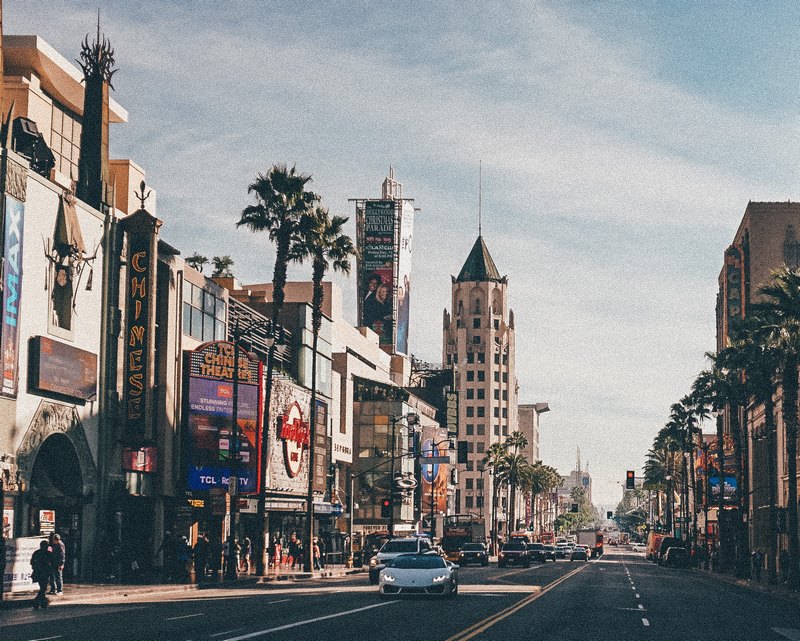L.A. TACO is embarking on its biggest mission yet: to create a food guide for every single neighborhood in Los Angeles! Along the way, we will also be releasing brief histories of each neighborhood to understand L.A.’s past and present a little more, all the while celebrating how each and every square inch helps make our fine city the best in the world. Today we’re taking a look at Hollywood.
Hollywood, California. Its fame as a fulcrum of the U.S. film industry looms as large over Los Angeles as its world-famous sign. To the degree that millions of tourists still confuse its rubber-beaten, star-engraved sidewalks with a place to spy Lon Chaney making out with Angelina Jolie. But beyond the S&M shops and ersatz superheroes, there’s an incredible history behind this inviting hillside neighborhood that once thrived with actual living stars whose legends still loom massive in the public imagination and continues to entrance today with its parks, theaters, shops, restaurants, outdoor concert venues, and a community stretching from the canyons to the dirty boulevard.
Let’s get into the history.
In 1853, historians tell us Hollywood’s first home was built, an adobe house in the desirable hillside neighborhood of Outpost Estates today. Thirty-two years later, Ohio-born Daeida Wilcox Beveridge, often referred to as “the mother of Hollywood,” and her husband, Harvey, a prohibitionist from Kansas envisioning a community based on sober religious principles, embarked on fulfilling that vision by creating a small town on family ranch land. They filed the subdivision under the name “Hollywood,” a name Daeida had learned from somebody claiming to own an estate by that name when she was traveling in Illinois. Later, with a second husband, Wilcox helped establish a library, police station, city hall, primary school, bank, and parks, among other institutions, donating significant land, as well, that would become eventual sites for Hollywood’s city hall, public library, and several churches.
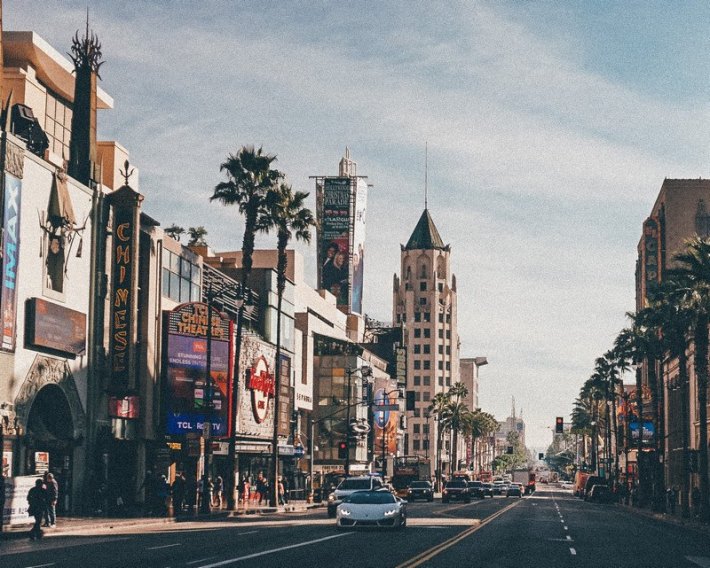
Of tantamount importance was the purchase of the 480-acre E.C. Hurd Ranch by Toronto-born, Midwest-raised businessman H.J. Whitley who came to the West Coast after suffering a nervous breakdown in 1893. He owned a successful jewelry store in Downtown while snatching up California real estate. Soon after the arrival of the 20th century, Whitley became the founding president and general manager of the Los Angeles-Pacific Boulevard and Development Company and set about transforming Hollywood. With fellow LAPBDC shareholders George W. Hoover, Moses Sherman, and L.A. Times owner Harrison Gray Otis, they pushed for intense urban modernization in the area, such as street car service and public utilities, while developing and selling land in their Hollywood Ocean View Tract. They fought bitterly with Beveridge, who was trying to create commercial development further east of their turf, centered around Highland Avenue and Prospect Avenue (what we call Hollywood Boulevard today).
Whitley opened the massive Hollywood Hotel at the extremely rural intersection of Hollywood and Prospect in 1902. Despite Hollywood officially becoming a dry, alcohol-free town in 1904, the year after Hollywood voted to incorporate into L.A. as a municipality, the hotel served as quarters for people coming to town to test out the idea of living in the newly marketed neighborhood and for the elite of the burgeoning film industry, eventually playing host to stars of the silent era like Rudolph Valentino and Ethel Barrymore. Whitley Heights is a neighborhood in Hollywood still treasured for its preserved historic architecture. After years of duking it out with Beveridge over the issue, Hollywood consolidated with L.A. in 1910 due to its insufficient water supply, during which Prospect Avenue became Hollywood Boulevard.
Whitley shares the title “Father of Hollywood” with Texan Charles Toberman, who went full bore on development in the Hollywood Hills, adding iconic residential and commercial properties, including lavish theaters and movie palaces, including Grauman’s Egyptian Theatre, Grauman’s Chinese Theatre, El Capitan Theatre, and The Roosevelt Hotel to the burgeoning Boulevard. By the early 1940s, Toberman was chomping at the bit to demolish Whitley’s declining Hollywood Hotel, a deed that wouldn’t be accomplished until 1956, when it was turned into the twelve-story, $10 million First Federal Savings & Loan Association of Hollywood building. That building would be razed itself in 2001 to become the Hollywood & Highland shopping complex we know today.
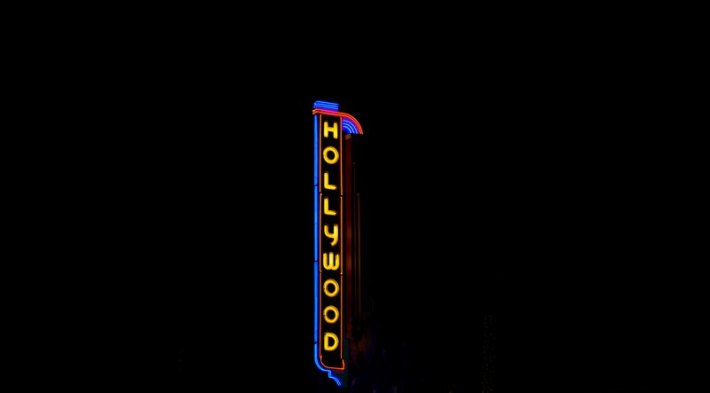
With temperate weather that allowed crews to film year-round and endlessly changing landscapes merging ocean, mountains and a working metropolis that enabled films to recreate a variety of landscapes, time periods, and regions and create large studios, Los Angeles quickly emerged as the capital of U.S. film production by the 1920s. Entertainment executives and stars stuck around for the benefits of good West Coast living and generally more welcoming people. There’s no exaggerating the importance to L.A.’s image, economy, and existence as the resulting film and entertainment industry. While certainly far from our area’s biggest industries, the footprint of the film industry has paved the way for massive growth in neighborhoods near and far to cram into by every global citizen who may be chasing a star just like the ones lining its boulevards. Its culture is synonymous with ours, from Disneyland to our population of hopeful actors and DPs to the Hollywood signs itself.
From the early 1900s to the 1920s, the rapidly advancing motion picture production industry was spreading like crazy around the United States, with various studios of different sizes being set up in different cities and the much of the early film industry centered in Fort Lee, New Jersey and New York. In 1908, the Selig Polyscope Company shot its version of The Count of Monte Cristo, in Los Angeles after beginning production in Chicago. It’s claimed to be the first L.A.-shot film. In 1910, D.W. Griffith began filming "In Old California" in Downtown, during which he and his cast and crew—including Blanche Sweet, Lillian Gish, Mary Pickford, and Lionel Barrymore—began exploring nearby parts of Los Angeles. They were charmed by Hollywood, choosing to film the movie—Hollywood’s first—there. Griffith made a few more movies in the neighborhood, while a studio opened on Sunset Boulevard in 1911. Inspired by Griffith and to avoid patent fees imposed by Thomas Edison on motion picture cameras and equipment on the East Coast, other moviemakers began to venture west, as well, turning it into a popular destination for the industry by 1915. Edison would sue anyone trying to make a movie. By the 1920s, Hollywood’s film industry was the fifth largest industry in the nation as movies, and news strips took off big time.
Before the advent of dubbing, Hollywood also served as a center of foreign, mainly Spanish, language film production, with mixed success due to low budgets and difficulty understanding the tastes of their audiences. Still, esteemed artists such as Luis Bunuel, Poncela, and Xavier Cugat were among the many hired in Hollywood.
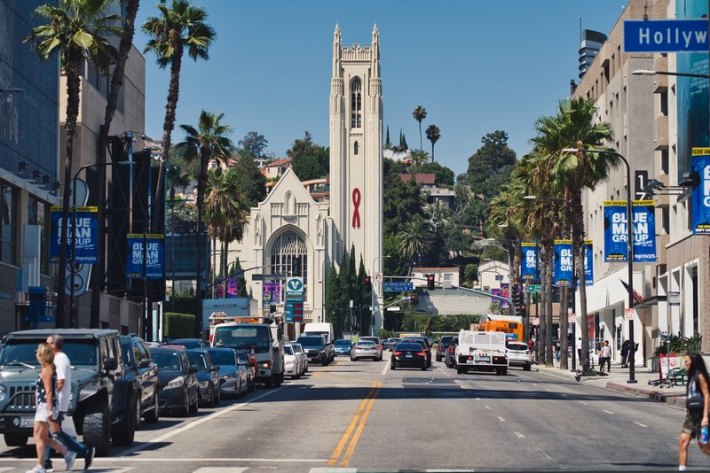
Hollywood’s golden age is considered from 1913 to 1969 when television began its slow march of dominance over theater-going. New York filmmakers took the harness back in a big way, and filming “on location” became all the rage. During this time, Los Angeles saw Hollywood overshadow the very city it’s a part of. As well as construction of local landmarks created as monuments to its local population and global star power, such as The Hollywood Bowl in 1919, The Greek Theater’s debut in 1931 after decades of planning, and most famously, the Hollywood sign nestled in the Hollywood Hills. The sign was commissioned by Chandler and erected in 1923. It originally read: "HOLLYWOODLAND" and was surrounded by flashing light bulbs, an advertisement for a few parcels in the Hills that went by the same name. In 1949, the “LAND” part of the dilapidated sign was torn down, with an agreement to drop the “land” so the sign referred to the area and not the real-estate product as its restoration was planned eventually executed from the 70s into the nineties.
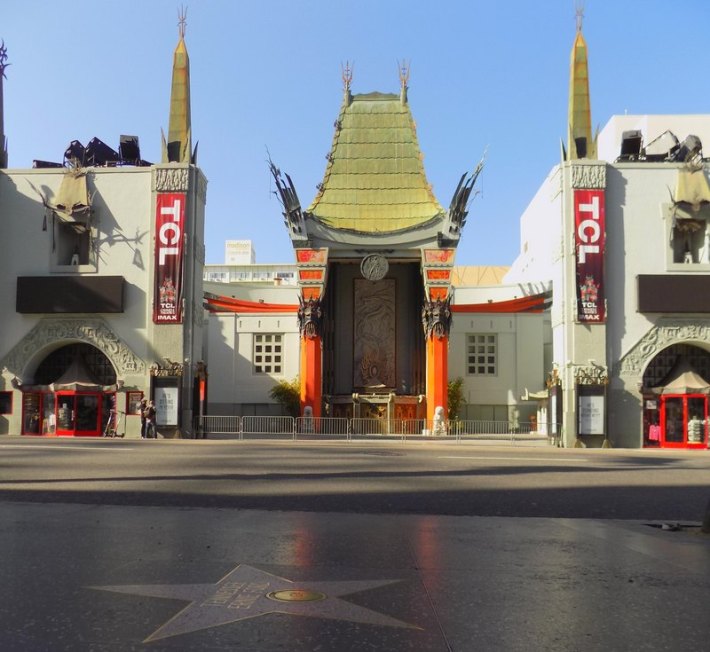
One of many claims is that the stars on the Hollywood Hotel’s dining room ceiling may have inspired the iconic stars on the Hollywood Walk of Fame, which was concocted in the early 50s by Hollywood Chamber of Commerce volunteer vice president E.M. Stuart. Construction stretched through the decade, delayed by lawsuits, including one by Charlie Chaplin’s son over the comedian’s exclusion, and even spinning off The Grammy’s to make up for the exclusion of essential recording legends who couldn’t meet specific album sales requirements. The first official star, for director Stanley Kramer, was affixed in 1960. The sixties and seventies saw a significant decline as the Hollywood industry bolted for bigger studio spaces in the Valley and the stars for bigger homes in nearby Los Feliz and beyond where they could still access work easily on the recently constructed 101 Hollywood Freeway. Many residents fled for the suburbs in turn. Decline continued into the 1980s as drugs, gangs, and demolition swept through the neighborhood.

Despite its reputation today for wayward tourists, badly costumed superheroes, and grimy sidewalks that gets local eyes rolling, Hollywood is more dynamic than its legend suggests. To the east of the well-trod Walk of Fame lie Thai Town and Little Armenia, in between a dozen dynamic restaurants, bars, and nightclubs such as Good Times at Davey Wayne’s, The Spare Room, The Plaza, and Harvard & Stone, plus old school classics echoing with Hollywood histories of both its glamorous and more Bukowski-adjacent days, like The Frolic Room, Power House, and Jumbo’s Clown Room. Major productions like Late-Night With Jimmy Kimmel and The Academy Awards are still shot on Hollywood Boulevard, which is home to some incredible shops, a trippy L. Ron Hubbard museum, double-decker buses that will show you where some star sneezed, and intimate, enlightening tours every Angeleno should take that will point out where Bela Lugosi used to wait for the bus to get to the studio for the day’s shoot.
A martini at Musso & Frank's before catching a show at the Hollywood Bowl reminds one, for all the glamor that may have been lost here, fleeting vestiges of old-school Hollywood luxury are still within reach.

